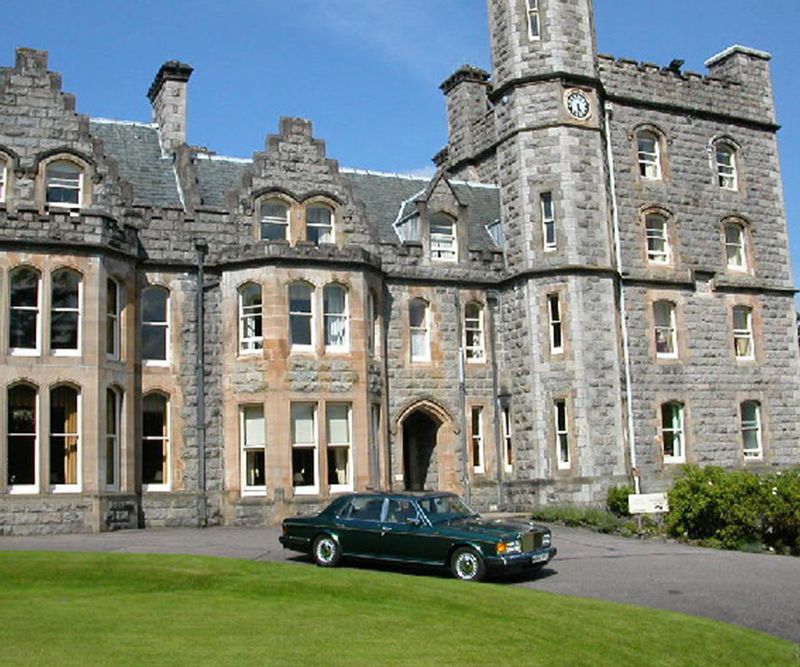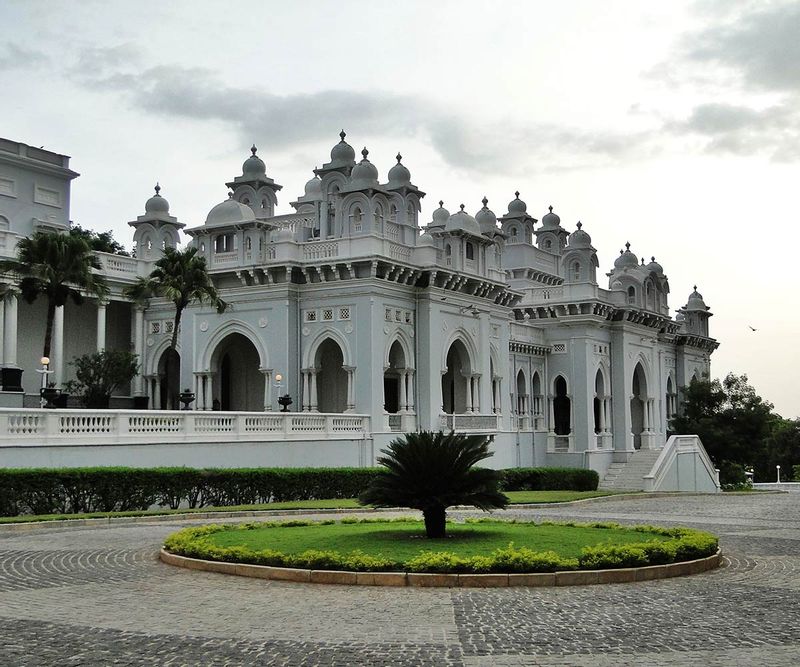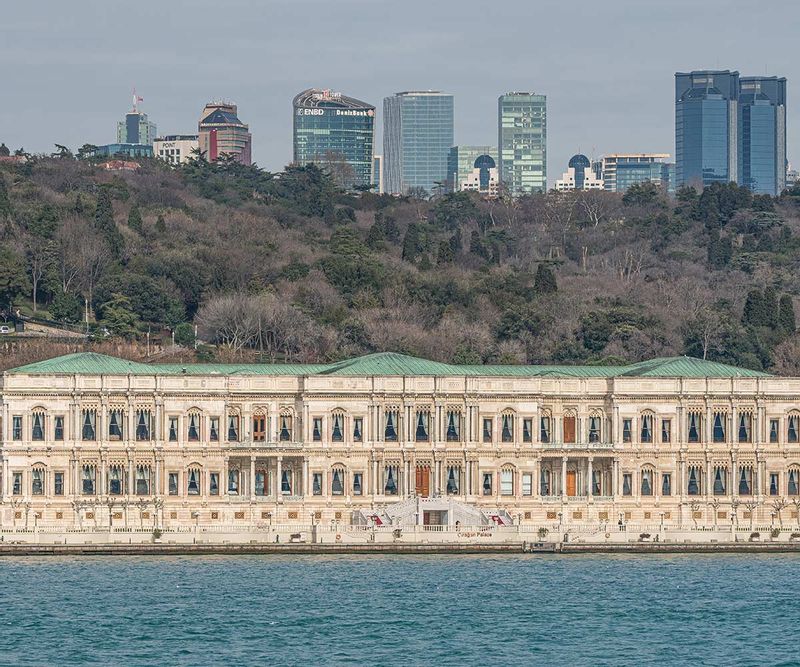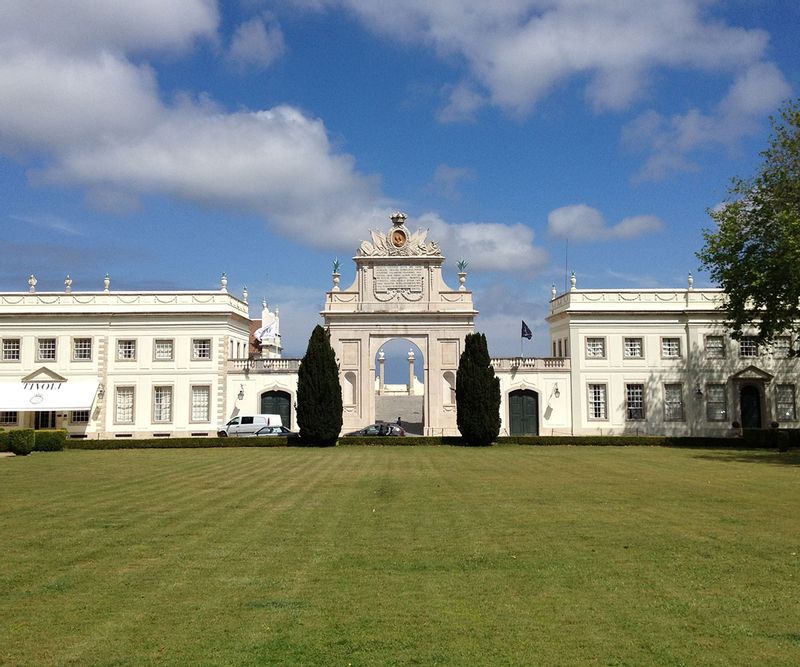Let's be honest—maximalism isn't dead. If the universe granted it, wouldn't we all love to live like an Indian maharaja, Chinese empress, an Ottoman sultan or Venetian doge if only for a night? Grand palace hotels have an inherent hook; you can't get enough of them. Not only do they glisten with grandeur, but their walls and interiors also echo stories from the past. Enveloped in rich history and breath-taking architecture, these places are a perfect mix of culture, hospitality and extravagance.
During World Heritage Week, we take a look at seven of the world's most magnificent properties that were once palaces and castles, now renovated and transformed into some of the world’s most astonishing luxury hotels.
Hold your breath!
1. Inverlochy Castle Hotel, Scotland

Scotland is a land full of stories of kings, queens, barons and even bloody massacres. The nation's landscape is riddled with castles, forts and within this arbitrary selection, the Inverlochy Castle Hotel, formerly known as Inverlochy Castle stands tall and proud. The property is a 19th-century Gothic revival style mansion, that once belonged to the third Lord Abinger. The castle was so famous at the time that in 1873, Queen Victoria spent a week here, sketching, painting and writing. Over time, the beautiful house and estate was sold to a Canadian entrepreneur, Joseph Hobbs, the owner of the Ben Nevis distillery. Once the estate changed owners, the family undertook massive renovation by employing a local architect and converted the house into a hotel, which opened for the first guests in 1969. Since then, this five-star hotel with 17 bedrooms and suites, has become somewhat of a jewel of the Scottish Highlands, run by Relais & Chateaux. The true beauty of the property is its key location—it is situated at the foot of Ben Nevis, Scotland's highest mountain, and the hotel lies at the head of the 'Great Glen'. This is a wonderfully strategic position from which to explore the region. The most authentic part of the property is its decidedly no-modern frills approach—here you won't find a spa or a treatment room but the feeling of being inside a grand home. The mansion features a small lake (called loch in Scottish) and a walled garden. The decadent interiors are dotted with antiques, cascading chandeliers and period furniture. One can learn archery as part of the on-site activities and what’s more, guests are offered airport transfers in a Rolls Royce.
2. Taj Falaknuma, India

India is perhaps one of the few countries that is host to a large number of palaces, forts and mansions, as most of the states in the country were once ruled by kings and princes. In the culturally-rich Hyderabad, the beautiful Falaknuma was built by Nawab Sir Viqar-ul-Umra, the Prime Minister of Hyderabad. He commissioned an English architect William Ward Marret to design the property, which came to be known as "a Mirror in the Sky". That is because the mansion was built in Italian marble with stained-glass windows. Sir Viqar-ul-Umra used this as his private residence, and after his time, the palace was handed over to the eighth Nizam of Hyderabad. His wife, Esra Jah decided to restore the ancestral palace to its former glory. In 2010, with the restoration overseen by Esra Jah and RMA Architects, and the task of its completion taken over by the Taj Group of Hotels, the property was converted into a heritage hotel. The on-ground work was extensive where it is said that decorative inlaid furniture, crystal glass chandeliers, handcrafted tapestries and brocades, 10 types of leather and 32 varieties of Italian marble and carved balustrades were imported from various countries to give the property its original character. The renovated hotel opened to guests in November 2010, with 60 rooms and 22 grand halls. One can find a considerable number of collections of the Nizam's artefacts including paintings, statues, furniture, manuscripts, books, an extensive jade collection, and Venetian chandeliers here.
3. Aman at Summer Palace, China
The best way to experience Imperial China, and to learn about its culture is to stay at a hotel that takes you down a historical lane. Staying a night at Aman at Summer Palace in Beijing will familiarise you with true Chinese royalty and hospitality. The property once belonged to Empress Dowager Cixi; this was used as a space for guests awaiting an audience with her. Over the years, the palace fell into despair and Aman Group of hotels were granted the opportunity to renew and conserve the original dwellings. The restored space that opened in 2008 transports one to China dating back to the Ming Dynasty. The series of century-old guesthouses are now 18 rooms and 25 suites. Heritage-rich pavilions, king-size beds, armoires on display, traditional wooden screens & bamboo blinds used as partitions are all royal features of the palace. What’s also interesting is that the historic Summer Palace, which is the largest and best-preserved imperial park in China, is mere steps away from the Aman at Summer Palace. And, the hotel is an ideal location from which to explore the Great Wall, which is about two hours away by car.
4. The Xara Palace Relais & Châteaux, Mdina, Malta

The history of Malta is reflected in the architecture of the stunning palace hotel. The Xara Palace was built during the late 17th century as a home to the noble family of Moscati Parisio. It was later used by the British during the war and in 1949 was converted into a hotel. The home gradually became decrypt and it was not until 1995 that the Zammit Tabona family bought the property. Its revival was a long, considered process as renovating a centuries-old property was not easy. The restoration was undertaken by a local architecture firm, Architecture Project. They referred to the original drawings and plans from the Government archives and slowly and sensitively brought it back to its former glory. Today the hotel houses magnificent antique church doors dating from the 18th century, 17 rooms, antiques and original paintings from Maltese masters. The hotel also has an exclusive Michelin Star restaurant, the de Mondion, which opens stunning views of the island. All along the property, the understated splendour of Mdina can be witnessed through the individually designed rooms with original paintings, antique tapestries and furnishings.
5. Çiragan Palace Kempinski Istanbul

During the 19the century, the sultans started building their own palaces instead of using those of their ancestors—the Çırağan Palace is the last example of this tradition. It was built by Sultan Abdulaziz, and designed by the Armenian palace architect Nigoğayos Balyan in 1867. While the palace, built in wood and colourful marble was a sight to behold, it couldn’t contain its residents for too long. Sultan Abdulaziz was dethroned and killed in 1876. His nephew took over the residence but stayed for only 93 days. Later the house became a venue for the Ottoman Parliament meetings but in 1910, a great fire destroyed the palace, leaving only the outer walls intact. It was finally purchased by Kempinski hotels, who restored it and converted it into a modern hotel complex, reopening it in 1992. The authentic details of the palace — be it the baroque style interiors, vaulted ceilings, elegant antiques, textiles and soft colours — truly create regal environs. The hotel currently has 313 rooms, including 20 suites in the hotel section and 11 suites in the historical Palace section. Guests can arrive at this exclusive property by car, private yacht, or even helicopter. The biggest draw of the hotel? The 4,300-square-foot Sultan Suite.
6. Casa Cuixmala, Mexico

Did you know that this hotel used to be a billionaire’s secret Mexican hideout? This hotel has the most colourful history because while it wasn’t owned by a prince, it was the property of one of the richest men in the world, who had a penchant for theatrics. The story goes that this 30,000 acres
home was built as a private family home by the notorious billionaire Sir James Goldsmith, a man who suffered decades of hostile media coverage because of his lifestyle and political image. In the heady days of the late 1980s and early '90s, Sir James who had a remarkable flair for whimsy converted his residence into a fantastic theatre. He would fly in the who’s-who of the world—the likes of Ronald Reagan, Henry Kissinger, and Richard Nixon—for a secret vacation. His palatial home featured zebras, elands, and crocodiles scattered around the lagoon, adding to the glamour and high life. After his death in 1997, his daughter Alix Marcaccini took over the property, and later converted it into a commercial place—not exactly a hotel or a resort–but more of an experience of living in a big ranch, or an upmarket estate. To convert the stunning residence into one that would be appropriate for guests, she invited designer Robert Couturier on-board. Today the property houses four suites in the main house, and seven remote bungalows, with the guest list of the likes of Mick Jagger, Madonna, and Bill Gates. The quirks of the original home are still present, with a life-sized bronze statue, a gorilla and a rhino, at the entrance. Guests are driven in SUVs down a five-mile-long driveway that overlooks grasslands, coconut plantations, mangrove swamps, and a river. The most fascinating suite here is the Cuixmala Suite, which was the private quarter of Sir James himself. The property has 20-foot ceilings and arched windows that showcase stellar views of the property's private two-mile beach.
7. Tivoli Palácio de Seteais, Sintra, Portugal

The Tivoli Palacio de Seteais was built in 1787, on an elevation so that the Dutch consul Daniel Gildemeester could enjoy the gorgeous landscape of the Sintra hills. After his passing, the palace changed many owners who over time, added different touches and styles to the interiors—from Neoclassical motifs to Latin inscriptions and a change to a symmetrical U-shape layout—the home’s landscape evolved. It was finally in 1946 that the Portuguese government purchased the site. In 2009 this grand historic destination underwent a massive renovation, thanks to the partnership with Fundação Ricardo Espírito Santo Silva. The interiors open to guests from all over the world boast of Moorish-inspired Romantic architecture, ornate furnishings, chandeliers, rich silks, marquetry inlay furniture, 18th-century antiques, and restored frescoes. Many of the walls are decorated with the original works of French painter Jean Baptiste Pillement. Just 30 bedrooms are housed in this elegant property making it boutique and exclusive.




